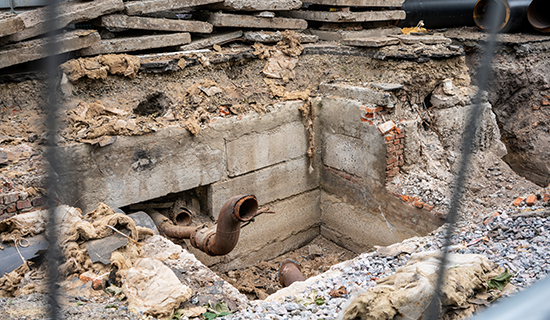As our cities and buildings age, they carry with them a hidden menace – an increased risk of Legionella contamination. This potentially lethal bacteria, responsible for Legionnaires’ disease and Pontiac fever, thrives in water systems and poses a serious health hazard, particularly in older structures. In this blog, we’ll delve into the growing concern of Legionella in aging infrastructure and explore how municipalities and building owners can address this pressing issue.
Understanding the Legionella Threat
Legionella bacteria, typically found in natural water sources, can infiltrate man-made water systems. When conditions are favorable, they multiply rapidly and can be released into the air through water droplets, posing a risk to anyone inhaling contaminated mist or vapor. Legionnaires’ disease, a severe form of pneumonia, is the result.
The Age Factor: Why Aging Infrastructure Matters
Aging infrastructure often exacerbates the Legionella problem for several reasons:
- Corroded Plumbing: Over time, pipes can corrode, creating ideal conditions for Legionella growth. Corrosion can also release sediments that act as a nutrient source for the bacteria.
- Stagnant Water: Older buildings may have underused or abandoned sections, leading to stagnant water in pipes – a prime breeding ground for Legionella.
- Outdated Systems: Legacy HVAC and plumbing systems may lack modern features that help control bacteria, such as efficient temperature control and disinfection mechanisms.
- Lack of Awareness: Older buildings may not have been designed with Legionella control in mind, and awareness of the issue may be lacking among property managers and tenants.
Addressing the Issue: What Can Be Done
- Regular Inspections and Maintenance: Municipalities and building owners should conduct regular inspections of water systems in aging infrastructure. This includes checking for leaks, corrosion, and stagnant water areas. Prompt repairs and maintenance can prevent ideal conditions for Legionella.
- Implement Water Management Plans: Develop and implement comprehensive water management plans. These plans include strategies to minimize stagnation, control water temperatures, and regularly clean and disinfect systems to prevent Legionella proliferation.
- Upgrade Infrastructure: In some cases, infrastructure upgrades may be necessary. This can include replacing corroded pipes with materials that are less conducive to Legionella growth and installing modern HVAC and plumbing systems designed for Legionella control.
- Educate Building Occupants: Building owners should educate tenants and occupants about the risks of Legionella and encourage them to report any unusual symptoms or water quality issues. Awareness can lead to early detection and intervention.
- Monitor Water Quality: Regularly test and monitor water quality for Legionella presence. If the bacteria are detected, swift action should be taken to address the source of contamination and implement remediation measures.
- Follow Regulatory Guidelines: Stay informed about and comply with local and national regulations related to Legionella control. These guidelines are continually evolving to reflect our growing understanding of the bacteria and how to mitigate risks.
The increased risk of Legionella in aging infrastructure is a significant concern for public health and safety. As our cities and buildings continue to age, municipalities and building owners must take proactive steps to address this growing threat. Through regular inspections, water management plans, infrastructure upgrades, and public education, we can reduce the risk of Legionella contamination and protect the health of those who live and work in these structures. By doing so, we ensure that our aging infrastructure remains a safe and reliable part of our communities for years to come.




